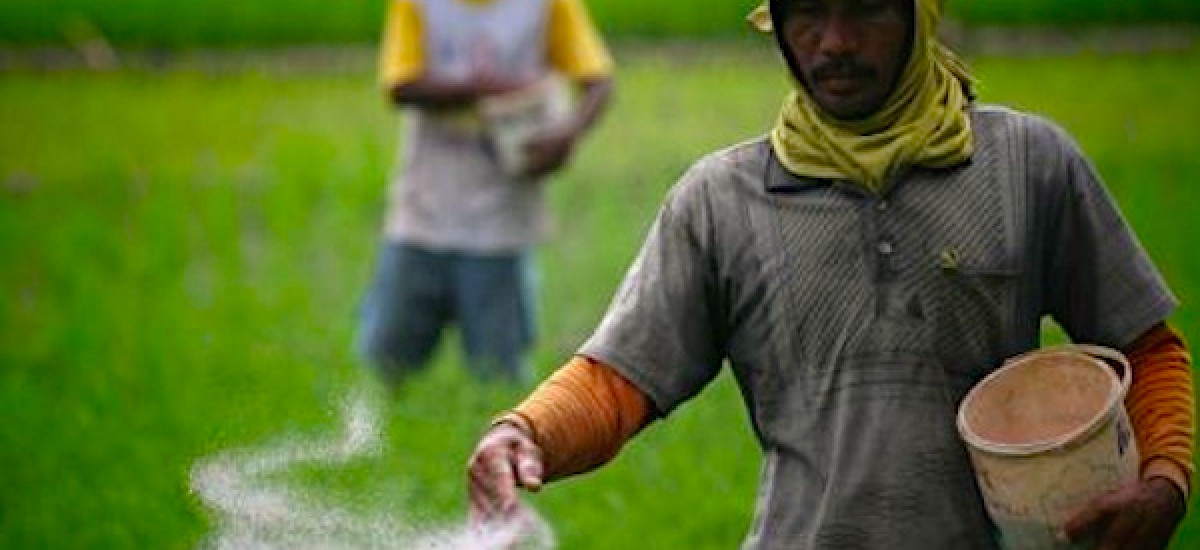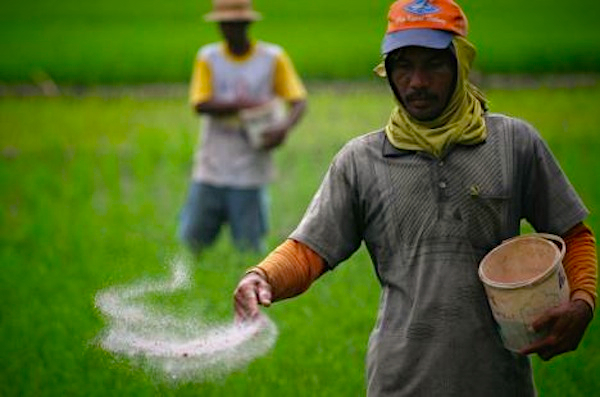When we ask the question, who uses pesticides? Followed by the question who promotes pesticides? It is relatively simple to see who gains and who looses by the promotion and use of these poisons. In Sri Lanka the farmers are asked to indulge in prophylactic spraying i.e. spraying in advance of any pest appearance. Such practices have to be held responsible for a sinister malaise that affects almost everyone; the malaise of Pesticide Accumulation.
Pesticide Accumulation refers to the tendency of some biocides and heavy metals used in these biocides to concentrate along the food chain. The biocide residues that are diluted as they are washed by rainfall are slowly taken up by simple plants, which are eaten by small animals, which are in turn eaten by larger animals. The toxin concentrating more and more as it rises in the food chain. This is particularly evident in aquatic systems, so producing or consuming fish from areas that have a large amount of biocides leaching into them, should be done with care.
Of even greater concern is the cavalier use of these toxins when processing fresh food for the market. Many vegetables are harvested soon after an application of biocide; often these are washed in unhygienic drains that add a bacterial load onto the produce. In some sinister cases, chemicals are applied directly onto the produce (fruits, vegetable) before they are sent to market as it ‘keeps it tighter’. The absence of support for a robust checking on the quality of food that enters the local market means the sub lethal poisoning of many of us. We do not feel the effects now, but as the substances concentrate within our bodies, we will feel the illness.
The monster of direct deaths by pesticide poisoning has yet to be effectively addressed. These toxins have been promoted as ‘Beheth’ (medicines) and the true toxic nature is never addressed in use and storage responsibilities. One result in Sri Lanka is that suffer the highest pesticide related death toll on the planet! Not a nice statistic by any measure.
The environment that we create for ourselves in urban areas is not very salubrious. The ‘pest control’ of mosquitoes and cockroaches and other ‘pests’ release vast quantities of toxins into our living spaces. If we consider just mosquito coils, it has been estimated that over seven containers worth of mosquito coils are burnt daily, in the Western District alone. Scientific studies indicate that the burning one mosquito coil would release the same amount of particulate matter as burning 75-137 cigarettes and the emission of formaldehyde from burning one coil can be as high as the amount released from burning 51 cigarettes. The rising incidence of lung cancer among youth who never smoke cigarettes can now be better understood.
As if this was not enough, there is an increasing rate of ingestion of chemicals through the advent of food processing and colouring. Often one chemical by itself is not too dangerous, but in combination they become a deadly cocktail. An example can be drawn from a study in the US that looked at the effects of Sodium Cyclamate (a sweetener), FD&C Red No. 2 (a food colouring agent) and polyoxyethylene (20) sorbitan monostearate, (a food emulsifier). In animals tested, each substance given individually did not produce ill effects, but given in combination resulted in the deaths of all test animals within fourteen days. If one reads the labels of the food and sweets that we consume today the varied combinations are obvious. For instance, one study on a popular cereal, Keloggs berry yoghurt crunch, demonstrated that it contained more than 13 different additives, preservatives, and food dyes, including Red 40 and Blue 1, which are known to cause allergic reactions in some people and mutations leading to cancer in lab animals. It also contained BHT, monoglycerides, and cellulose gum.
And it’s not just food. A number of additional toxins also enter our systems from other industrial sources and often come in the form of phthalate plasticizers and parabens both of which are widely used in personal care products. According to a recent (2010) study, parabens and phthalates can clear our bodies relatively quickly but only if we are not exposed to them on a regular basis. If used regularly, these substances accumulate in the body. Phthalates are associated with infertility, obesity, asthma, and allergies, as well as breast cancer; parabens are suspected of causing breast cancer.
The tragedy is that, chemicals used in all of these industrial products are big business. Food corporations own some of the largest personal care companies so that they can profit on multiple fronts with cheap, industrial ingredients. For example, Nestlé owns 30 percent of the world’s largest cosmetic and beauty company L’Oreal. Tightly regulating these substances and evaluating potential harm could mean a loss of profits.
The other spectre rising in the field of public health are prescription drugs. In Sri Lanka the word ‘prescription’ is a misnomer as most commercial drugs can be obtained over the counter. In the United States, the Los Angeles Times reported that in 2009, legal drugs were responsible for the deaths of more than 37,485 people—which equals one person killed every 14 minutes. Many of the deaths are related to prescription pain and anxiety medications, which are readily accessible and often misused, and these types of drugs now cause more deaths than cocaine and heroin combined. The abuse of legal drugs in Sri Lanka is exasperated by unscrupulous ‘doctors’ who act as promoters, for the multinational pharmaceutical companies. We need to watch the statistics of drug poisoning in Sri Lanka very closely indeed!
In discussions on national health, a process vital for the sustainable development of any nation, there are some disturbing trends that seem to cry out for immediate attention. The Health ministry has stated that ‘between 300 to 400 persons die from Non Contagious Diseases (NCDs) in Sri Lanka daily’, it is reasoned that ‘negative changes in the lifestyles of people, bad food habits, stress and urbanization are some of the main reasons that stand behind this situation. To this list must be added agrotoxins, food additives and domestic pest control inputs.
The Health Ministry has appointed a National Steering Committee to inquire into the situation. This is a laudable action; they should embark on a public discussion on the toxins and dangers that we are being exposed to and how we can minimize personal risk. In the face of the gauntlet of risk, that we are all supposed to endure under the label of ‘development’, it would be charitable to inform us on how we can mitigate our personal risk. The Sri Lankan State is after all, the Sri Lankan people, of what value is ‘economic development’ if the price is a sick state?


